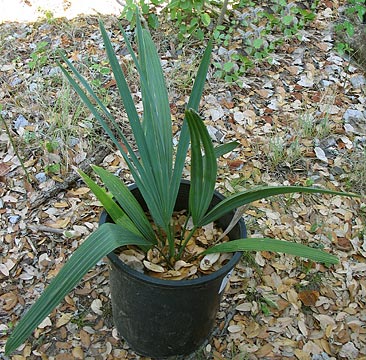Smaller S. minor plants have been successfully transplanted to a wide range of habitats, some of which are seasonally very dry. As part of a plant rescue mission in a hill country creekbed we moved plants from an area to be bulldozed. In spite of our efforts it was not possible to get enough root to save even medium-sized plants. What appeared to be large succulent root-like bases are in fact the underground trunks typical of S. minor - not roots at all, and not given to generating new roots. With the smaller transplants new growth was extremely slow. I would urge anyone wishing to plant a dwarf palmetto to obtain a strong established plant from a local nursery rather than putting native plants in peril. But if the goal is to cultivate an attractive native palm that is well adapted to a much wider range of habitats in Texas, I strongly recommend S. mexicana or a Brazoria palmetto.
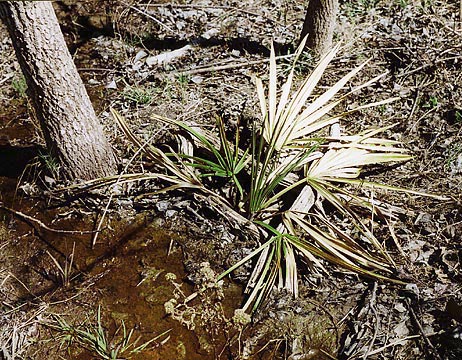
|
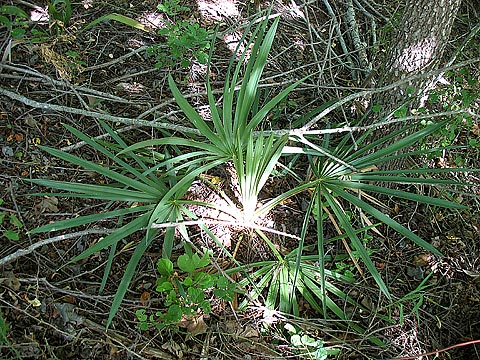
|
| Salvaged plant after 6 years, still waiting for new
growth. This was the sole survivor among those plants with a full 'fan.' |
The same plant c. 17 years later,
with all new growth, having started almost from scratch. |
Some 168 volunteer Brazoria palmettos have now appeared (as of spring 2009) in areas that have seasonal moisture, some over 500 feet distant. (For images and a map showing the distribution of seedlings.)
Although the Brazoria palmetto has generally been considered a S. minor × S. mexicana hybrid, recent DNA research (Origin and relationships of the Brazoria palmetto (Arecaceae: Sabal) based on AFLP data) seems to rule out S. mexicana as a factor in its origin. Its species status remains a mystery.
c. 1981 |
1984 |
|
1988 |
|
|
1998 |
1997 |
Another trait shared by our plant with S. mexicana is the natural germination of seeds under and close to the fruiting plant, where a small colony of seedlings now exists.
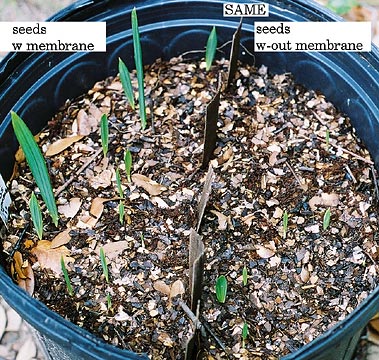
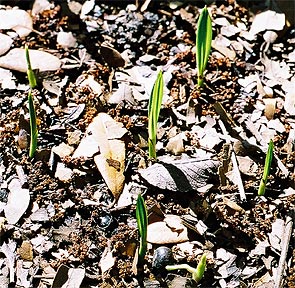 |  |
| S. mexicana | Brazoria Sabal |
|---|---|
| Seedlings emerging in 5-gallon pots. | |
Deer do not normally bother palmettos, but young seedlings have been
trimmed by virtue of browsing of adjacent plants. During the drought of 2006 Sabal seedlings in 5-gallon pots were left without protection in a shady area and kept moist. Soon the pots also contained columbines. As deer visited the area, they continually trimmed the columbines, but didn't touch the Sabal leafs. As with any recent plantings, especially in moist areas, protection from armadillos is important.
